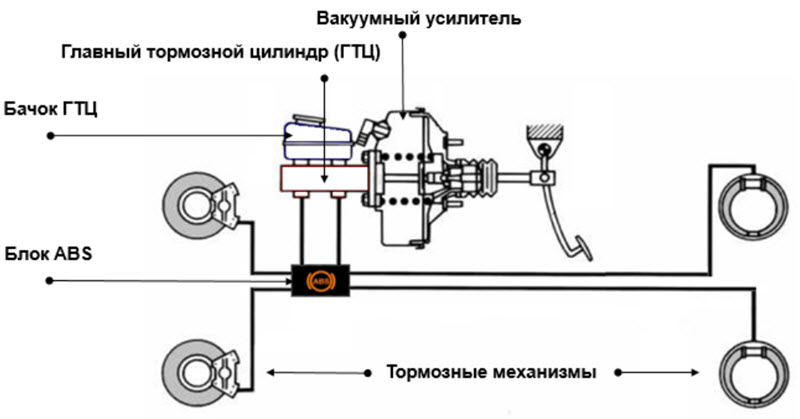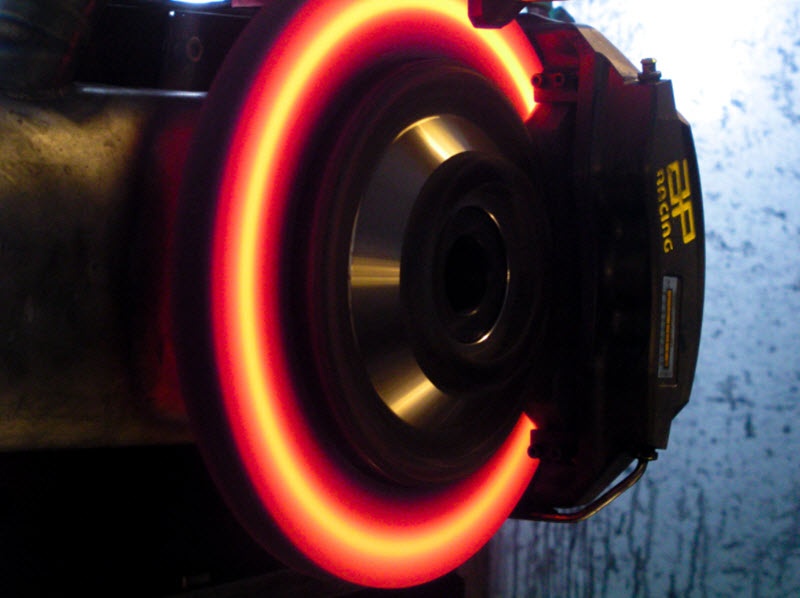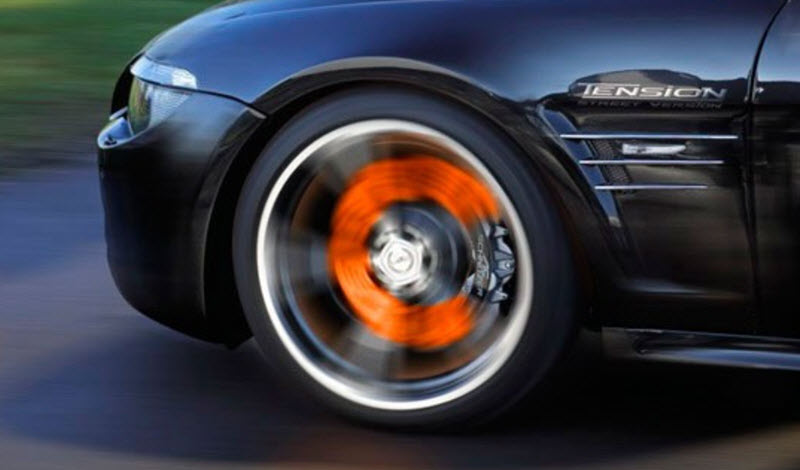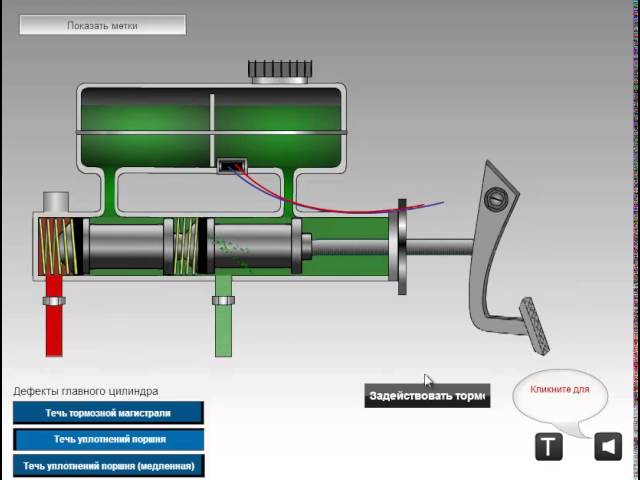
How hot should brake discs be in a car?
Content
Brake discs are designed to heat up. This is the only way to convert the kinetic energy of an accelerating car into heat and then dissipate it in space. But this should happen strictly at the command of the driver. Heating of the brakes in all other cases indicates the presence of a malfunction, as well as emergency options, that is, excessive overheating.

Features of the car brake system
The task of the brakes is to stop the car as quickly and safely as possible. The easiest way to do this is with the help of the friction force, which occurs in the brake mechanisms.
Brakes are located in modern cars on each wheel in order to make the most of the grip of the tires on the road.
The work uses:
- brake discs or drums, metal parts associated with wheel hubs;
- brake pads, consisting of a base and linings made of a material that has a high coefficient of friction against cast iron or steel and at the same time withstands high temperatures with minimal wear of both the pads themselves and the discs (drums);
- brake drive, mechanical, hydraulic and electronic devices that transmit force from the driver's controls to the brake mechanisms.

There are several types of brake systems, a significant role in the heating of the discs is played by the service and parking brakes.
Both of them work in much the same way - the driver through the drive creates a mechanical force on the brake pads, which are pressed against the discs or drums. There is a friction force directed against the inertia of the car, the kinetic energy decreases, the speed drops.
Should brake discs and drums get hot?
If we calculate the braking power, and this is the energy released in the form of heat during braking per unit time, then it will many times exceed the engine power.
How the engine heats up, including the energy carried away with the exhaust gases and spent on useful work in moving the car with the load, is quite easy to imagine.

It is possible to allocate such a colossal amount of energy only with a significant increase in temperature. It is known from physics that the energy flux density is proportional to the temperature difference, that is, the difference between the heater and the refrigerator. When the energy does not have time to go into the refrigerator, in this case it is atmospheric air, the temperature rises.
The disk can glow in the dark, that is, gain several hundred degrees. Naturally, it will not have time to cool down between braking, it will be hot the whole trip.
Overheating reasons
There is a very big difference between heating and overheating. Heating is a regular phenomenon, that is, calculated and tested by the car developers, and overheating is an emergency.
Something went wrong, the temperature rose critically. In the case of brakes, this is very dangerous, since overheated parts cannot work normally, they lose strength, geometry and resource very quickly.

Consequences of driving on the handbrake
The simplest thing that almost all novice drivers encounter is to forget to remove the parking brake at the beginning of the movement.
Engineers have long and successfully struggled with this forgetfulness. There were light and sound alarms that are triggered when you try to move off with tightened pads, as well as automatic handbrakes that are cocked and released by an electric drive when the car stops and starts off.
But if you still drive with the pads pressed, the significant transmitted power will heat the drums so much that the pad linings will char, the metal will deform, and the hydraulic cylinders will leak.
This is often noticed only when the tires on the disks start to smoke. It will require extensive and expensive repairs.
Stuck caliper piston
In disc mechanisms, there are no separate devices for removing pistons from the pads. The pressure in the hydraulic system is removed, the clamping force becomes zero, and the friction force is equal to the product of the pressure on the block and the coefficient of friction. That is, "zero" does not matter what number - it will be "zero".

But it doesn't always work out that way. The block should be retracted by a fraction of a millimeter, at least due to the elasticity of the sealing cuff. But if corrosion occurs between the piston and the caliper cylinder, and the piston wedges, the pads will remain pressed with a non-zero force.
The release of energy and uncontrolled heating will begin. It will end only after a certain thickness of the layer has been erased from the overlay as a result of overheating and loss of properties. At the same time, the disk will also overheat.
Air in the braking system
Rarely, but the effect was noticed when the pads spontaneously pressed against the discs due to poor pumping of the drive from air.
It expands from heat and begins to press the pads against the discs through the cylinders. But still, much earlier than overheating sets in, the driver will notice that the car practically does not slow down.
Brake disc wear
When worn, the discs lose their ideal geometric shape. A noticeable relief appears on them, the pads try to run in to it.
All this leads to unpredictable contact between the surfaces of discs and linings, and any contacts will mean overheating with all the ensuing consequences.
Incorrect replacement of brake pads
If the pad replacement technology is violated, for all its simplicity in the case of a disc brake, pads may jam in the caliper.
The resulting friction will overheat the disc and caliper guide vane, which will only exacerbate the situation. It usually ends with the driver noticing extraneous sounds and a sharp decrease in braking efficiency.


Watch this video on YouTube
How to eliminate heating discs
There are simple rules for saving brakes from overheating:
- use the brakes only in emergency cases and for the final stop, in all other situations, coasting under positive or negative engine thrust;
- do not use the brakes on long descents in the mountains, only the engine or the mountain brake, the service system is unlikely to survive to the lowest point of the first serious descent, to be sure of this, it is enough to calculate the potential energy that the car has on the top of the mountain;
- maintain the brake mechanisms in perfect condition, making sure that there is no corrosion of the hydraulics and guides with each replacement of the pads, using a special lubricant and its application map;
- timely replace discs with extreme wear, without waiting for their complete transparency.
Overheated discs must be replaced. They have lost strength, their coefficient of friction has changed even with new pads, and most importantly, it is uneven in area, which will lead to jerks and new overheating.


Consequences of improper operation of the brake system
Overheated discs are usually replaced when a thump is felt in the brake pedal to the beat of the wheel. If this mandatory measure is neglected, then the destruction of the disc during braking is possible.
This usually ends up with a catastrophic wheel jam and the car leaving the trajectory in an unpredictable direction. With a dense high-speed stream, a severe accident is inevitable, most likely with victims.
At each MOT, the discs are carefully inspected. There should be no tint colors arising from overheating, the more noticeable relief, curvature or a network of cracks.
The discs are always changed along with the pads, and in case of uneven wear - also with the revision of the calipers.
